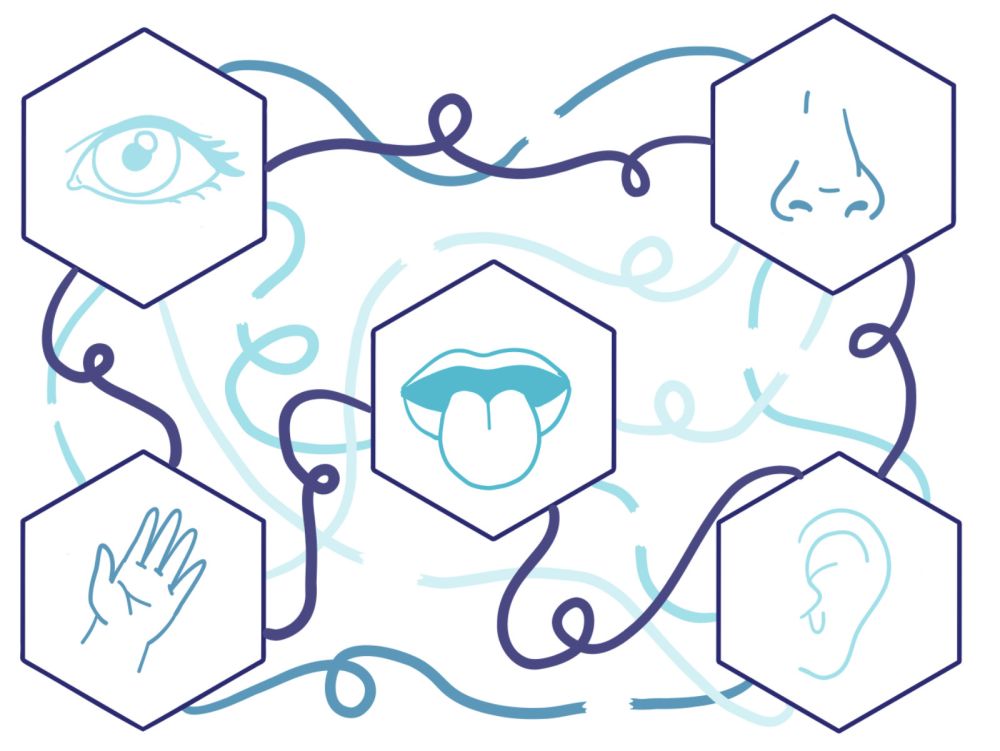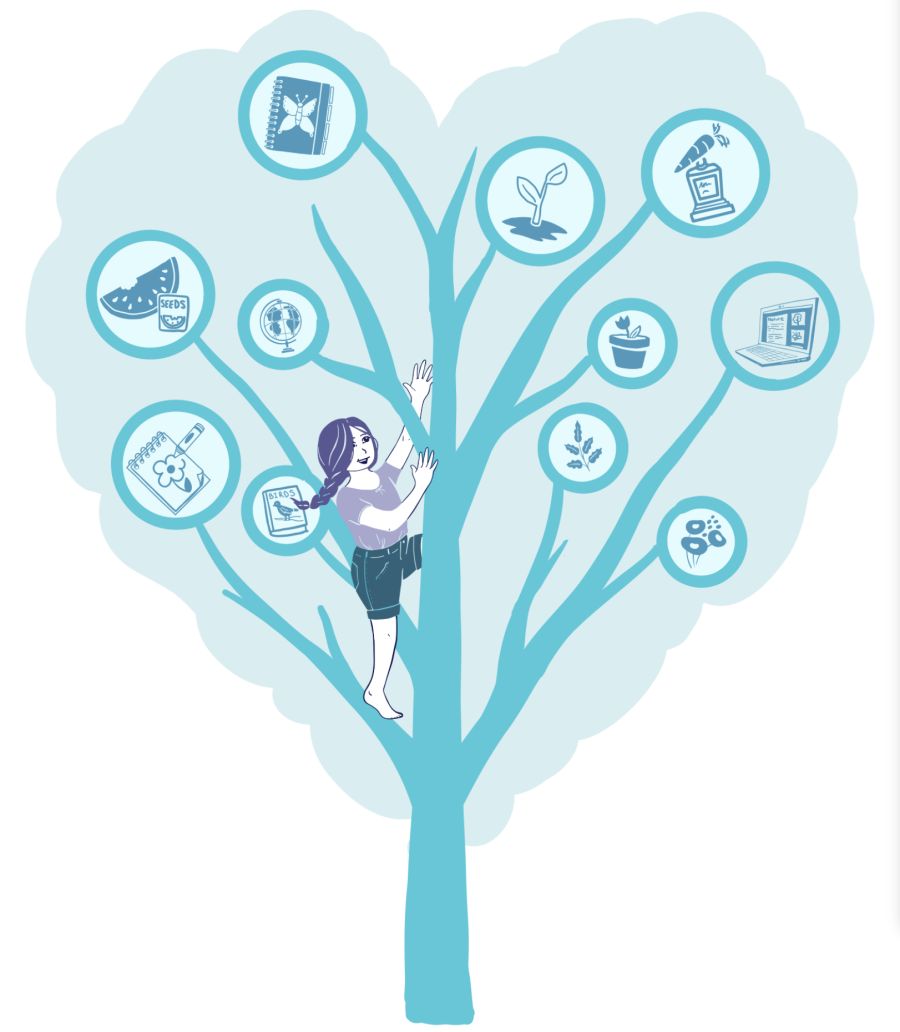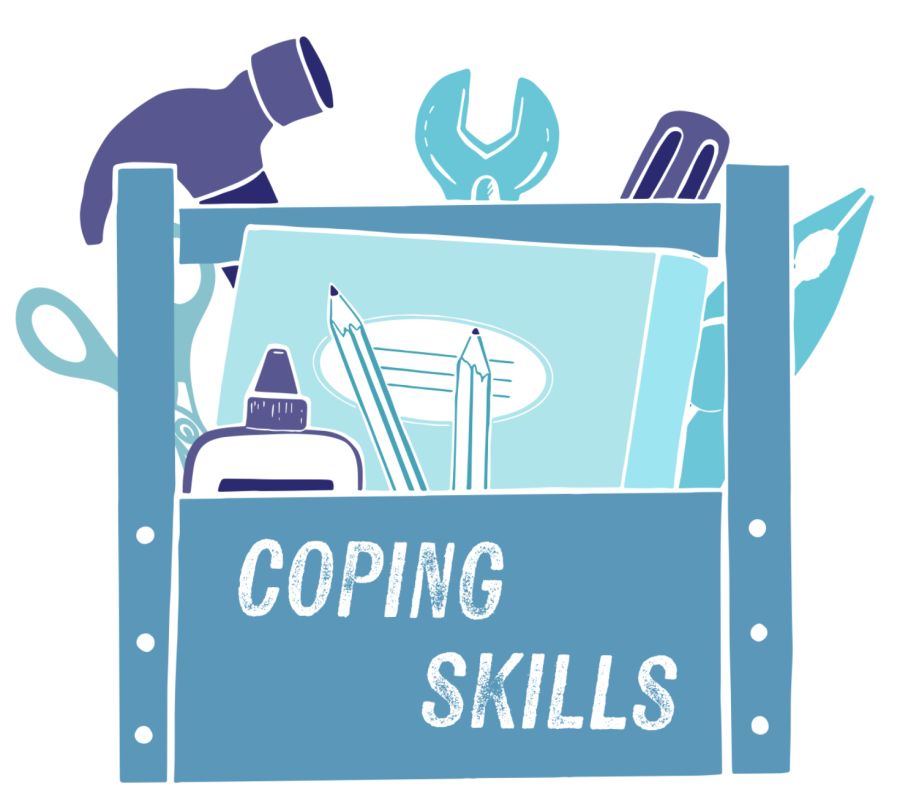
Synesthesia
We love to celebrate all types of neurodivergent brains here. One really fun neurotype often seen as a gift is synesthesia. The dictionary defines synesthesia as the production of a sense impression relating to one sense or part of the body by stimulation of another sense or part of the body. What that means is that for people with synesthesia, one sense can trigger another. They can “see” music, “smell” an image, or even associate letters with colors.
Although the exact cause of synesthesia is not known, neurologists and researchers believe the onset comes in early childhood development. When we are born, all of the neural connections between our sense centers are closer together with many of these pathways overlapping. For most people, these overlapping pathways are prunes by the time they are four months old. Scientists believe that brains with synesthesia never fully pruned all the overlapping pathways during that time in their development.
It is estimated that only around 2-4% of the population has synesthesia. Neurologists and researchers have currently identified nineteen forms of this unique condition. Below is a list of these forms and what they entail. (Fun fact: Our in-house communication designer and blogger Annalyse has the last two forms of synesthesia on the list below!)
-
Grapheme–Color : (input + sight)This is one of the most common forms. It is where individual letters or numbers are shaded or tinted with a specific color. For example: “A” might be red, or “3” might be green. These correlations vary for each person with this form.
-
Grapheme–Smell : (input +smell) Same as #1 but instead of colors the connection is made to smells.
-
Grapheme–Taste: (input + taste) Same as #1 but instead of colors the connection is made to tastes.
-
Grapheme–Tactile: (input + touch) Same as #1 but instead of colors the connection is made to textures or physical sensation in different parts of the body.
- Chromesthesia : (hearing + sight) Another very common form involves the association of sounds with colors. For some, everyday sounds can trigger seeing colors. For others, colors are triggered when musical notes or keys are being played. People with synesthesia related to music may also have perfect pitch because their ability to see and hear colors aids them in identifying notes or keys.
- Spatial Sequence : (input + spatial) With this form the brain connects a sequence of information (such as the alphabet, phone numbers, or the months of the year) with spatial awareness. Although some synesthetes can see this information in the physical space around them, most see it in their mind’s eye.
- Number Form : (input + spatial) Is an automatic and involuntary reaction that happens whenever these individuals think of numbers. These numbers form their own unique mental map with each number having a set place on the map.
- Auditory-Tactile : (hearing + touch) One of the rarer forms, synesthetes hearing certain sounds can induce sensations in parts of the body. Not to be confused with fission (goosebumps), these sounds can induce the feeling of a hand on a shoulder, or the sensation of cool water on the skin.
- Ordinal Linguistic Personification : (input + perception) Also called “sequence personality synesthesia”, is where ordered sequences such as days of the week, dates and letters of the alphabet are associated with personalities or genders. This often co-occurs with grapheme-color synesthesia.
- Misophonia : (hearing + emotional processing) This form is considered a neurological disorder as it causes certain sounds to induce negative emotions such as fear, anger, hatred or disgust.
- Mirror-Touch : (sight + touch) This is where individuals feel the same/similar sensation as another person. So if someone with this form observes someone being tapped on their shoulder, the synesthete involuntarily feels a tap on their own shoulder as well.
- Lexical-Gustatory : (hearing + taste) In this form hearing certain words can induce a specific taste. The sound of the word “chair” might taste like strawberry ice cream. It is estimated only .2% of those with synesthesia have this form.
- Kinesthetic-Tactile : (movement + tactile) Another extremely rare form, that involves experiencing a connection to one of the senses when analyzing complex relationships. For example, one person with this form, described seeing interactions between physical shapes causing sensations in the feet when solving a math problem.
- Kinesthetic-Visual : (movement + sight) Same as #13 but instead of a tactile experience the connection is made to color, shapes, or other visuals.
- Conceptual-Auditory : (input + hearing) Also a very rare form, this involves a connection between concepts such as different hairstyles and sounds.
- Conceptual-Visual : (input + hearing) Same as #15 but instead of an auditory experience the connection is made to color, shapes, or other visuals.
- Perceived Emotion-Tactile : (emotional processing + touch) the perception of different emotions in other people creates a specific, consistent tactile sensation in a particular part of the body.
- Person-Color : (Perception + sight) In this form of synesthesia, the synesthete sees or perceives colors for people they know. This means the brain is connecting complex interpersonal relationships and colors.
Person-Tactile : (Perception + touch) The same as #18, except the brain is connecting complex interpersonal relationships and textures or other physical experiences.
Annalyse Tanzos
Related Articles That Might
Interest You

Neurodivergent Special Interest

Coping Skill( CBT techniques and DBT techniques)
